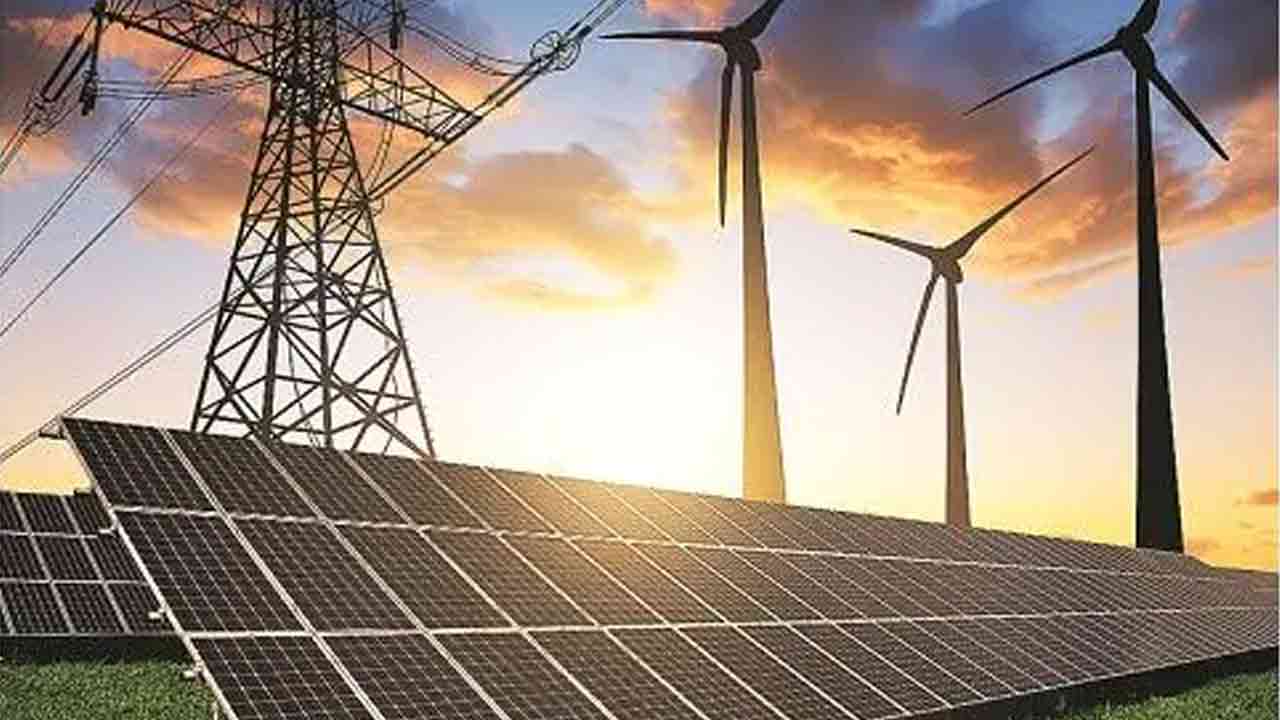Power Sector: Energy demand on the rise

The 'grey to green' theme is accelerating in India as the renewable energy sector plans to increase four times by 2030.
India ranks third among all the electricity-producing countries and second in consuming electricity globally. The country’s installed power capacity was 392.02GW as of 2021. Power can be called an inevitable component in the growth of the nation as well as the economy. India’s power generation portfolio involves various conventional sources such as coal, natural gas, oil, and renewable sources such as hydro, wind, solar, and waste. The major players comprise Adani Power Limited, CESC Limited, Damodar Valley Corporation, and NTPC Limited. In India, the private sector in the power industry accounts for generation of 48.5% of the country’s thermal power whereas states and the centre account for 26.7% and 24.9%, respectively.
In India, electricity generation is mainly dependent on thermal sources which include coal, lignite, gas, and diesel. Thermal power generation contributes 59.8% of the total production capacity. The country also has several renewable energy sources such as hydro, wind, and solar. Hydro and other renewable power sources have 11.9% and 26.5% share, respectively. Furthermore, India has a nuclear power generation capacity of 6.78 GW. Meanwhile, the total installed generation capacity of private, central, and state sectors account for 48.4%, 25.1%, and 26.5%, respectively. In 2021, the pandemic and the resulting lockdown imposed by the government strongly shook the power sector. Several industrial and commercial activities halted due to the lockdown which led to a substantial decline in electricity demand.
Outlook
According to the International Energy Agency (IEA) projection, power demand in the country can record growth at an annual rate of 6.5% between 2022 and 2024 seeking support from rising consumption from residential and industrial segments. The projection is based on the fact that India has clocked the highest 10% YoY growth in power demand during CY 2021, joining China on the stage. This growth was recorded in a year when global consumption registered its largest-ever annual increase in absolute terms, of more than 1,500 trillion-watt hour (TWh) as well as the largest relative rise since recovery from the financial crisis in 2010.
Looking at some attractive opportunities which are in the pipeline for power sector, under the Union Budget 2022-23 the government announced the issuance of sovereign green bonds while also conferring infrastructure status to energy storage systems, including grid-scale battery systems. Additionally, Rs 19,500 crore (USD 2.57 billion) was allotted for the PLI scheme to boost the manufacturing of high-efficiency solar modules. This augurs well for companies engaged in the power generation and distribution segment as well as for those companies manufacturing power-related equipment.
The electric mobility adoption in India is still in a tender phase, with the increase in policy support, the electric vehicle (EV) adoption numbers are expected to rise. Policy measures such as extending the duration of Faster Adoption and Manufacturing of Electric Vehicles in India (FAME) Phase II by two years to March 2024 and NITI Aayog releasing a handbook to guide EV charging infrastructure will also underpin the adoption of EVs in future. In this fiscal year, the Indian power sector will focus on discovering and providing solutions for problems like power cuts, monetary losses, technological up-gradation and cost cuts. The advanced technologies used currently have empowered all the domains to identify and enhance their capabilities while improving customer satisfaction.
Financial Highlights
The recent geopolitical events in Europe led to a sharp increase in global fuel prices, including coal, petroleum, and natural gas which affected the ability of several thermal power plants in India to generate power at viable costs, limiting their output. As a result of supply constraints in the face of growing power demand, the average market clearing price of electricity on exchanges rose to Rs. 8.23/kWh in the Day-Ahead-Market (DAM) in March 2022. Aggregate energy demand for FY 2022 across the nation stood at 1,380 billion units (BU), registering a growth of 8.2% over the energy demand for FY 2021.
Let’s have a look at the financial performance of power companies in Q4FY22.
The top companies according to market capitalisation are Adani Green Energy, Power Grid Corporation of India, NTPC, Adani Power and Tata Power Company. These companies have recorded an attractive growth in net sales on a YoY basis in 2022. Adani Green Energy was the leader, recording a rise of 62.32%, followed by Tata Power Company and NTPC posting growth of 31.09% and 20.21%, respectively. For Adani Green Energy, robust growth in revenue from power supply was supported by a capacity addition of 1,940 MW and improved solar and wind CUF. Its continued growth in EBITDA from the power supply and cash profit was driven by an increase in revenues and cost efficiencies.
These were brought in through analytics-driven operations and maintenance. Looking at the growth in operating profit, Adani Green Energy again took the top position, recording a robust growth of 45.9% followed by Adani Power recording a rise of 30.13%. The other three companies posted substantially lower growth. In terms of growth of net profit, Adani Power recorded the highest jump of 286.74% whereas Adani Green Energy saw an increase of 177.27%.
Disclaimer: Investment/Trading in securities Market is subject to market risk, past performance is not a guarantee of future performance. The risk of loss in trading and investment in Securities markets including Equites and Derivatives can be substantial. Also, The
 Tanushree Jaiswal
Tanushree Jaiswal Ruchit Jain
Ruchit Jain



